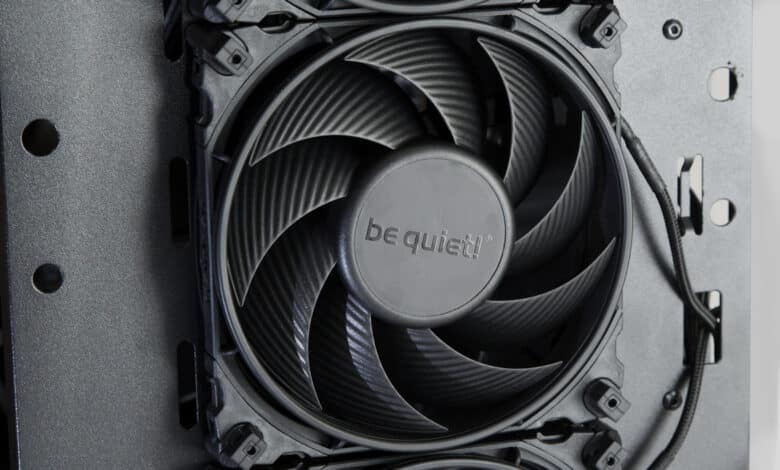
be quiet! has been known for high-quality components for a long time. Among them you can find CPU coolers, cases, power supplies and at the forefront: fans. With a wide range of products from inexpensive models to the premium segment, you can find suitable computer parts for virtually every budget. When it comes to fans, it starts with the inexpensive Pure Wings, followed by the Shadow Wings. The Light Wings are available with RGB lighting. The upper class runs under the name Silent Wings. 2022 be quiet! has now launched the fourth generation of the popular premium fans. Here, an additional new Pro series has appeared in the range: The be quiet! Silent Wings Pro 4, which we subject to a test here in two sizes.
Specifications of the be quiet! Silent Wings Pro 4 120 mm
| Dimensions | 120 x 120 x 25 mm |
| Bearing | Fluid Dynamic Bearing |
| Motor | 6-Pole |
| Weight | 227 g |
| Number of fan blades | 9 |
| Cable length | 50 cm |
| Connector plug | 4-pin PWM |
| Life expectancy | 300,000 hours |
| Maximum speed M mode | 1600 RPM |
| Maximum speed HS mode | 2500 RPM |
| Maximum speed UHS mode | 3000 RPM |
| Maximum volume (UHS) | 36.9 dB |
| Maximum power consumption (UHS) | 3.6 W |
| Maximum airflow (UHS) | 142.5 m²/min |
| Maximum air pressure (UHS) | 5.31 mm (H2O) |
| Price | € 30.11 * |
Specifications of the be quiet! Silent Wings Pro 4 140 mm
| Dimensions | 140 x 140 x 25 mm |
| Bearing | Fluid Dynamic Bearing |
| Motor | 6-Pole |
| Weight | 258 g |
| Number of fan blades | 7 |
| Cable length | 50 cm |
| Connector plug | 4-pin PWM |
| Life expectancy | 300,000 hours |
| Maximum speed M mode | 1100 RPM |
| Maximum speed HS mode | 1900 RPM |
| Maximum speed UHS mode | 2400 RPM |
| Maximum volume (UHS) | 36.8 dB |
| Maximum power consumption (UHS) | 6 W |
| Maximum airflow (UHS) | 165.5 m²/min |
| Maximum air pressure (UHS) | 3.64 mm (H2O) |
| Price | € 31.54 * |
Special features
- Corners changeable depending on the application
- Switch to select a range of power and volume
The be quiet! Silent Wings Pro 4 differ from the regular Silent Wings 4 in that they have a switch with which you can regulate the speed. At level M, the fans rotate in a speed range that is effective but does not break any performance records, but should be barely audible in the process. This would be typical for use as a case fan. At the HS level, the maximum speed range is already brisk. This is supposed to achieve a powerful performance and the noise is still bearable. This would be a typical use in the cooler sector. The UHS mode is rather loud, but hits the industrial range with a high speed. If the noise level is not an issue, very high performance can be expected here. To what extent this theory proves true in practice, the be quiet! Silent Wings Pro 4 test shows.
Packaging
- Cartons in cardboard
- low plastic content
The packaging of the be quiet! Silent Wings Pro 4 consists of a black cardboard box, in which there are other small boxes made of cardboard. Of these, the fan sits in one, and the mounting hardware and replacement corners are found in the other. Opening the box went very easily with the 140mm version of the be quiet! Silent Wings Pro 4, but opening the box with the 120mm version presented more difficulties. The screws and tool-less mounting pins are in small plastic bags, but aside from that, the packaging did not use plastic at all, which is very commendable. Visually, the relatively compact box of fans makes a good and noble impression. The high price is reflected in the stripe on the side, which says “high-end” and thus sorts in the demand for the fans.
Scope of delivery
- Interchangeable corners for different applications
- Assembly material
The scope of delivery of the be quiet! Silent Wings Pro 4 is not overly extensive. In addition to a fan and the compact manual, the box contains two types of removable corners, four fan screws and four pins for tool-free mounting. That’s all that’s included, but that’s also all that’s practically needed. Where other fans come with low-noise adapters, the be quiet! Silent Wings Pro 4 is conceptually able to do without them, as the switch on the back takes over this role without the need for any additional external parts. Radiator screws are also not included, as the be quiet! Silent Wings Pro 4 with the standard thickness of 25 mm do not require any extraordinary screws.
Design
- Pointed fan blades than predecessor
- improved sleeves
- Logo in black on new models
The design of the be quiet! Silent Wings 4 has changed significantly compared to the previous series. The fan blades of the be quiet! Silent Wings Pro 4 almost look like the previous design got a touch of Noctua NF-A12x25. The fan blades are clearly more pointed and the edge to the frame has become narrower. But overall, the fans carry clear be-Quiet! DNA with the waves on the fan blades. However, the motor in the center of the fan has visibly grown.
However, another important point in terms of design for the new generation of be quiet! Silent Wings is that the be-Quiet! logo in the center is no longer printed in the company’s typical orange color, but in glossy black on a matte black border. This makes the new fans look more serious and no longer clash with one or the other color scheme of the computer.
Workmanship
- Premium-level workmanship
The build quality of the be quiet! Silent Wings Pro 4 passes the test. Where the quality of previous models was already very high, these models also offer very high quality for the price. The frame is torsionally stiff, the fan blades are robustly finished and the edges are all neatly finished. The cable sleeves are close, making the cable look narrower and less obtrusive. It also makes its width consistent throughout. They are also well-made and sit firmly on the frame without any wobbling. In short, the price and build quality are definitely on a premium level.
Installation and exchange corners
- Changing corners without tools
- Case assembly also possible without tools
Apart from the switch, you can optimize the be quiet! Silent Wings Pro 4 for different purposes by changing the corners. The corners that are optimized for radiator use are installed at the factory. Apart from that, there are corners that avoid vibrations with rubber pads and are thus optimal for use as a case fan. Lastly, there are corners that work with the tool-less pins to attach them to the case. Changing the corners is simple in principle, but not quite as easily done in practical terms. You have to press down two latching lugs on two sides of the corners and pull the corner upwards at the same time. This actually works best with two hands, so you can push with one and pull with the other.
Note: The radiator corners are labeled. Three out of four corners are Type-A and one corner is Type-B. The latter is for the corner with the cable.
To mount the be quiet! Silent Wings Pro 4 as a case fan, the pins can be used for tool-free mounting. For this, the matching corners have to be fastened and then the pins along with the washer are simply pressed in – done. This requires some force, as does the removal, but is very simple in principle. Alternatively, you can also use the regular fan screws with the corresponding corners, but then not without tools.
Performance of the be quiet! Silent Wings Pro 4 120 mm as a radiator fan
- Three fans of different brands in comparison
- Testing different speed ranges
For the test of the be quiet! Silent Wings Pro 4 120 mm and some comparison fans, the performance of the case fans was set to static low speeds. In addition, the AMD Ryzen 9 5950X was used for performance comparison, which draws around 120 W in the test system during the Allcore Cinebench run (4.25 Ghz at 1.15V). Here, the DeepCool LS720 is used as the AIO, which is installed in the front of the Fractal Design Pop XL Air. For measurement, the cooling system is heated up for 8 minutes and then the average temperature of one minute is measured. Lastly, the temperature delta is achieved, which is the temperature difference between the room temperature and the CPU temperature, so that the results are not distorted by fluctuations in the room temperature.
| Speed | Noctua NF-A12x25 | Noiseblocker NB-eLoop X B12-PS ARGB |
be quiet! Silent Wings Pro 4 120 mm |
| 1200 RPM | 36°C @ 39 dB (53% PWM) | 36.4°C @ 43 dB (81% PWM) | 36.2°C @ 40 dB (74% PWM M mode) |
| 1600 RPM | 34.8°C @ 42 dB (75% PWM) | 34.9°C @ 46 dB (100% PWM, 1500 RPM) | 34.8°C @ 43 dB (100% PWM M mode, 1500 RPM) |
| 2000 RPM | 34.5°C @ 46 dB (100% PWM) | not reached | 33.6°C @ 46 dB (81% PWM HS mode) |
| 2300 RPM | not reached | not reached | 33.4°C @ 48 dB (100% PWM HS mode) |
| 2750 RPM | not reached | not reached | 32.8°C @ 53 dB (100% PWM UHS mode) |
The specifications of the be quiet! Silent Wings Pro 4 list a maximum speed of 1600 in M mode, 2500 in HS mode, and 3000 in UHS mode. The models in this review achieved a slightly lower RPM of about 1500 (M mode), about 2300 (HS mode), and 2750 (UHS mode). This is still within the usual +/- 10% range, but it is noticeable.
Analysis of volume and performance 120 mm
- Noctua and be quiet! at similar performance levels
- be quiet! Silent Wings Pro 4 reaches significantly higher speeds
- Noiseblocker largely beaten and noticeably louder
In this test, the be quiet! Silent Wings Pro 4 120 mm do well. The Noctua NF-A12x25 have been right up there when it comes to the power-to-volume ratio for a few years now. In the mid-range of quiet 1200 RPM to audible 1600 RPM, the Silent Wings Pro 4 120 mm come very close to the NF-A12x25, but still lag behind minimally. At 2000 RPM, however, the performance of the be quiet! Silent Wings Pro 4 seems to scale better with the increased RPM and at largely identical volume levels, the Noctua NF-A12x25 are beaten in terms of performance. 2000 RPM and above reach a level of volume that I wouldn’t want to have running on a day-to-day basis, but unlike the similarly priced competition, the be quiet! Silent Wings Pro 4 offer the ability to scale up performance even further, which also leads to measurably better results.

The Noiseblocker NB-eLoop X B12-PS ARGB are the only RGB fans in the test and don’t do too badly performance-wise in the achieved speed range, but they are by far the loudest fans. Where both the Noctua NF-A12x25 and the be quiet! Silent Wings Pro 4 are only restrainedly perceptible at 1200 RPM, the eLoop X already play in the borderline of everyday tolerability, which the other two fans only reach at 1600 RPM.
Performance of the be quiet! Silent Wings Pro 4 140 mm as a radiator fan
- Comparison against the previous model
- Test of different speed ranges
For the test of the be quiet! Silent Wings Pro 4 140 mm, the procedure is largely identical to the test of the smaller fans. However, the be quiet! Silent Loop 2 280 mm is used as the AIO, which is mounted on top in the case for space reasons. Unlike the comparison against other brands, however, we’ll take a look at the difference between it and the previous model, the be quiet! Silent Wings 3 High-Speed 140 mm.
| speed | be quiet! Silent Wings 3 High-Speed 140 mm | be quiet! Silent Wings 4 Pro 140 mm |
| 500 RPM | 56.3°C @ 39 dB (30% PWM) | 56.3°C @ 39 dB (49% PWM M mode) |
| 800 RPM | 47.8°C @ 39 dB (50% PWM) | 48.1°C @ 39 dB (78% PWM M mode) |
| 1100 RPM | 44.2°C @ 40 dB (70% PWM) | 44.7°C @ 39 dB (100% PWM M mode, 1020 RPM)
42.8°C @ 40 dB (58% PWM HS mode, 1100 RPM) |
| 1500 RPM | 40.1°C @ 44 dB (100% PWM) | 40.1°C @ 41 dB (83% PWM HS mode) |
| 1720 RPM | not reached | 39.4°C @ 43 dB (100% PWM HS mode) |
| 2170 RPM | not reached | 37.7°C @ 47 dB (100% PWM UHS mode) |
Analysis of volume and power 140 mm
- In the low speed range, comparable to the predecessor
- In the upper speed range, the volume is lower
In the be quiet! Silent Wings Pro 4 test on a radiator, the first thing that stands out is that the performance is hardly different compared to the predecessor in the lower speed range. However, as with the 120 mm version, they do not reach the specified maximum speeds in the different modes. Therefore, I performed the test twice in the 1100-RPM range. The first deviations that go beyond the measurement tolerance can be seen here.
It gets really interesting from 1500 RPM. Because here the be quiet! Silent Wings Pro 4 are noticeably quieter than the Silent Wings 3 with a very similar cooling performance. At 1720 RPM (the achieved average speed at 100% PWM in medium HS mode), the be quiet! Silent Wings Pro 4 are still quieter than the Silent Wings 3 at 1500 RPM – and now with a better cooling performance. At maximum power, which is around 2170 RPM for the fans in the test in UHS mode, we can see a further increase in performance. However, where the noise at 1720 RPM is already in the tolerable limit, the 2170 RPM is louder than I wanted it to be in everyday use.
Performance as an air cooler fan
- Neglectable performance differences
- High speed range does not provide significant additional power
For the test of the be quiet! Silent Wings Pro 4 120 mm as an air cooler fan, the second test system comes into use. In principle, the test procedure is identical, but here a Ryzen 5 3600X comes into use and the heatsink used is that of a DeepCool AK500, which has a large surface area for temperature dissipation and whose fin density is quite high. All fans are tested at full speed (100% PWM). In contrast, the case fans are run at a constant low power to have as little impact as possible on the measurements and the noise level.
| Fan on the DeepCool AK500 | Delta idle temperature | Delta Cinebench temperature | Volume and RPM |
| DeepCool FK120 100% PWM | 8.9°C | 46.9°C | 41 dB @ 1870 RPM |
| Noctua NF-A12x25 100% PWM | 8.6°C | 47.1°C | 41 dB @ 2040 RPM |
| Noiseblocker NB-eLoop X B12-PS | 8.7°C | 47.5°C | 40 dB @ 1490 RPM |
| be quiet! Pure Wings 2 120 mm PWM | 9.1°C | 48°C | 40 dB @ 1590 RPM |
| be quiet! Silent Wings Pro 4 120 mm M-mode | 8.7°C | 47.6°C | 39 dB @ 1560 RPM |
| be quiet! Silent Wings Pro 4 120 mm HS mode | 8.5°C | 46.3°C | 42 dB @ 2400 RPM |
| be quiet! Silent Wings Pro 4 120 mm UHS mode | 7.6°C | 45.6°C | 45 dB @ 2850 RPM |
Realistically, the difference between different fans on the air cooler is less than water cooling. Whether you use a cheap be quiet! Pure Wings 2, a Noctua NF-A12x25, or a be quiet! Silent Wings Pro 4 in M mode, it doesn’t make much of a difference. The performance does increase with the speed, but the associated increase in noise can hardly be justified. For example, the volume of the be quiet! Silent Wings Pro 4 doubles between M and UHS mode, but there is only a 2°C difference between the modes in the Cinebench comparison.
Performance rating
- Switch acts as a limit
- High power consumption at full power
- Overall very high performance – also already with the previous models
When testing the be quiet! Silent Wings Pro 4 120 mm and 140 mm, a few points stand out. For example, those who already use the predecessors, the Silent Wings 3, will benefit little from an upgrade, because they are already very good. This also applies to the high-quality competition, such as Noctua with the NF-A12x25. Only those who want to run the fans in the upper performance range will benefit from a higher efficiency and the higher maximum speed of the new generation. However, it was the case in the test that the maximum speeds mentioned in the specifications were never reached, but were quite consistently about 10% lower. In principle, this is not a problem since the performance is still high, but it is worth mentioning. On the other hand, it is interesting that the speed was higher in the second test system.
When asked if you can’t simply set the fans to UHS and then regulate them via PWM, we have to say yes. Because the switch is more or less a performance limitation. After all, the lowest speed range in any mode for the be quiet! Silent Wings Pro 4 120 mm was around 500 RPM, while the 140 mm version was around 350. So by switching to a higher power mode, you don’t give up the minimum speed. This means that you have access to the full performance range from very low to very high in UHS mode. So, setting the switch is really only worthwhile if you use automatics and want to prevent the fans from getting too loud. Or draw too much current, because at full speed you can load the headers very intensively, especially with splitters.
For whom?
- Non-Pro models are cheaper
- Pro models offer more flexible applications
- Long lifetime for use in future systems
The be quiet! Silent Wings Pro 4 are all-rounders that you buy for a long period of use. With these fans, you have high-quality premium fans that you can use in a wide variety of places. So they can definitely serve as radiator fans in one computer and as case fans in the next. If you plan to use the Silent Wings in only one computer and know exactly which positions to use them in, you can save quite a bit of money with the regular be quiet! Silent Wings 4. The high-speed variants are very good for radiator use and the other models can be used optimally as case fans. Still, you don’t sacrifice quality this way, just the flexibility of the switch.
The expensive Pro version is an investment in the future. With the high expected lifetime of 300,000 hours (= 12,500 days = 34 years of continuous operation), these fans can definitely outlive several computers and be used in very different places as needed. Thus, the costs are relatively high at once, but if you actually use the fans for years and don’t have to change them when upgrading the system, it can be worth it compared to buying several cheap fans. That being said, even the similar quality competition is not noticeably cheaper in price and if you use the regular models instead of the Pro variant of the be quiet! Silent Wings 4, you will actually come out cheaper.
Conclusion
The be quiet! Silent Wings Pro 4 are definitely in the premium segment. While they are expensive, they are strong and relatively quiet at that, as long as you don’t push them to the highest performance range. All in all, they are definitely among the best fans on the market. Also, with their all-black design without any standout orange accents, they fit in better with most systems than their predecessors. The build quality is extremely high and the features are optimal even without a lot of adapter cables, and despite the high price, it has to be realistically said that the value for money is still right. Realistically, however, the non-Pro variant has an even better value for money and relevant performance reductions are not to be expected in the humane volume range.
be quiet Silent Wings Pro 4
Workmanship
Features
Cooling performance
Noise level
Value for money
95/100
The be quiet! Silent Wings Pro 4 are absolute top-class fans - powerful, jet black and RGB-free.


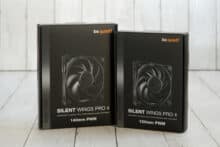
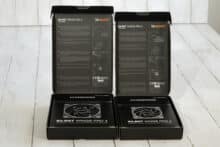

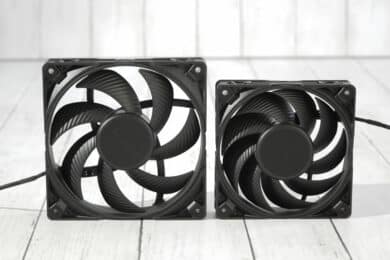
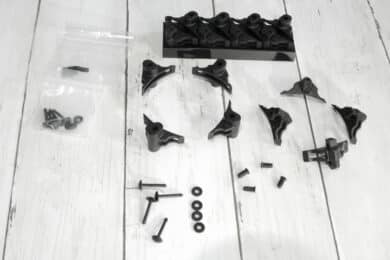
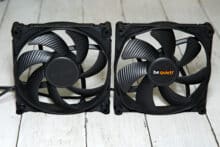
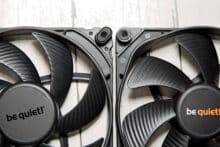
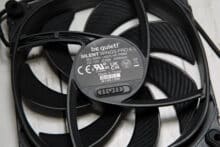

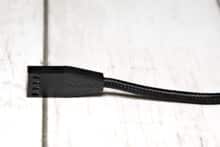
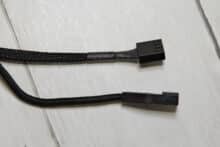
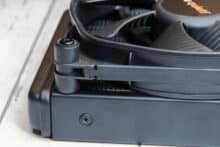
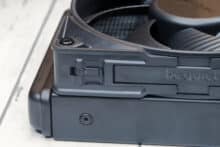
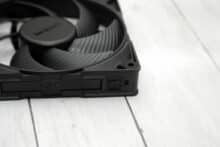

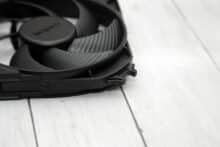
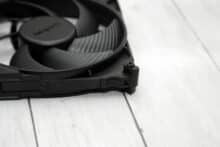
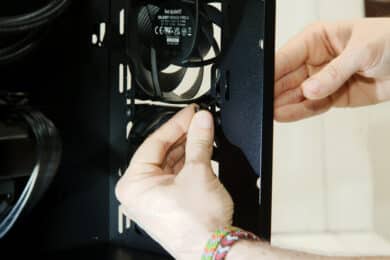
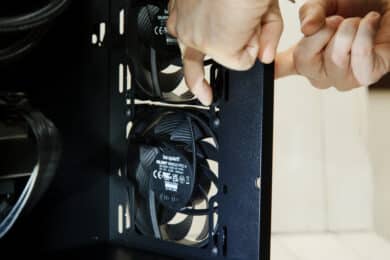



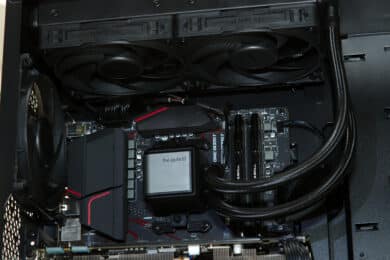
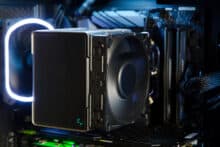
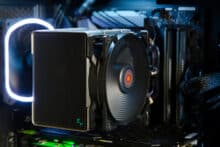
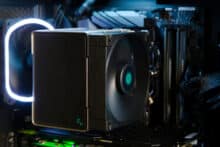


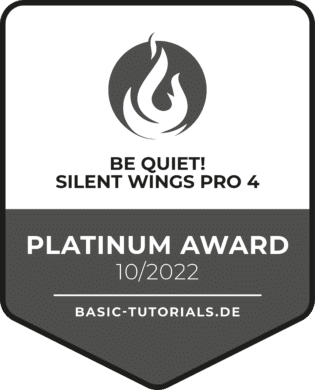
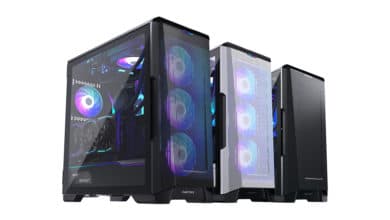



No replies yet
Neue Antworten laden...
Gehört zum Inventar
Beteilige dich an der Diskussion in der Basic Tutorials Community →